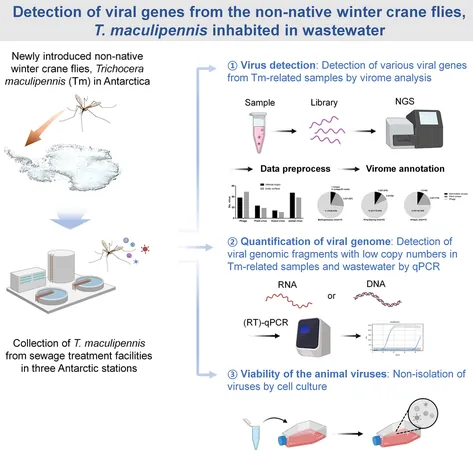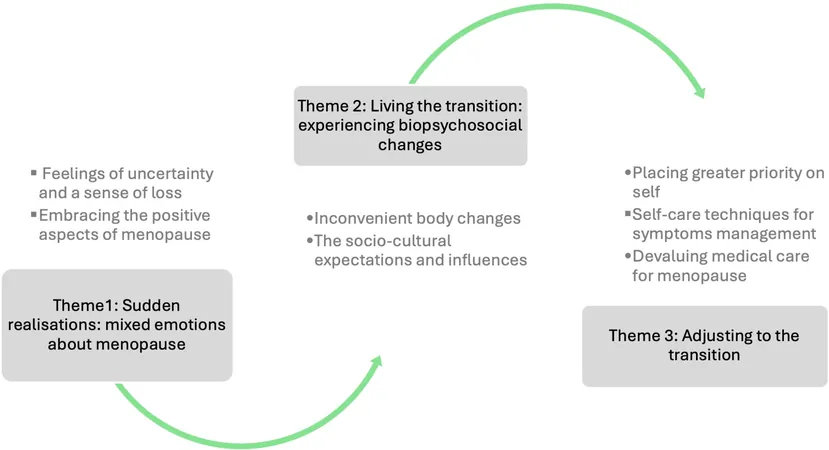
Uncovering the Hidden Threat: Non-Native Winter Crane Fly in Antarctica May Carry Human Viruses!
2024-11-24
Author: Mei
Introduction
Antarctica, a pristine wilderness largely untouched by human influence, is becoming increasingly vulnerable to the encroachment of non-native species. The introduction of the winter crane fly, *Trichocera maculipennis*, poses a potential risk to this unique ecosystem. This study, conducted across three Antarctic research stations, sets out to investigate whether this invasive fly could serve as a carrier for viruses that typically affect humans.
The Study
Using advanced methods such as next-generation sequencing (NGS) and quantitative PCR (qPCR), researchers analyzed samples collected from sewage treatment facilities inhabited by *T. maculipennis*. The aim was to detect any viral genetic material that might indicate the fly's role as a mechanical vector for viruses.
Findings
The study uncovered alarming evidence: human adenovirus (AdV) and human endogenous retrovirus (HERV) fragments were found in the samples. Both of these viruses are typically associated with human waste. Plant viruses like the pepper mild mottle virus (PMMoV) and cucumber green mottle mosaic virus (CGMMV)—which serve as indicators of fecal contamination—were also detected.
However, the concentrations of AdV and HERV were found to be low, along with evidence suggesting that the adenovirus was non-viable when isolation tests were performed. This means that while *T. maculipennis* can carry these viruses, its actual capacity to transmit them is limited under current environmental conditions.
Broader Implications
As human activities continue to escalate in Antarctica, the possibility of new species introductions—alongside the risks they pose—cannot be overlooked. Non-native species like *T. maculipennis* may alter the delicate balance of local ecosystems, and their role as potential carriers for human viruses makes this an even more pressing issue.
The movement of pathogens from non-native species to local wildlife can result in new disease dynamics, affecting both human health and the fauna of Antarctica. This could have disastrous effects on the ecosystem, comparable to incidents recorded in other parts of the world where invasive species have dramatically altered ecological landscapes.
Conclusion
This groundbreaking study marks the first foray into understanding non-native species as potential conduits for human pathogens within the Antarctic region. Despite the low concentrations and viability of detected viral particles, the implications of these findings warrant heightened surveillance and further research. The findings serve as a clarion call to monitor non-native species as the realities of climate change and human encroachment continue to challenge Antarctica's ecological integrity.
As we venture deeper into climate changes and increased human activity in polar environments, understanding the risks that invasive species like the *T. maculipennis* pose is more crucial than ever. The fate of Antarctica's unique ecosystem depends on our awareness and responsive measures to protect it. Stay tuned as we uncover more about the hidden threats to our planet's last great wilderness!




 Brasil (PT)
Brasil (PT)
 Canada (EN)
Canada (EN)
 Chile (ES)
Chile (ES)
 España (ES)
España (ES)
 France (FR)
France (FR)
 Hong Kong (EN)
Hong Kong (EN)
 Italia (IT)
Italia (IT)
 日本 (JA)
日本 (JA)
 Magyarország (HU)
Magyarország (HU)
 Norge (NO)
Norge (NO)
 Polska (PL)
Polska (PL)
 Schweiz (DE)
Schweiz (DE)
 Singapore (EN)
Singapore (EN)
 Sverige (SV)
Sverige (SV)
 Suomi (FI)
Suomi (FI)
 Türkiye (TR)
Türkiye (TR)